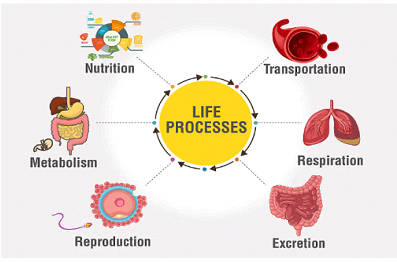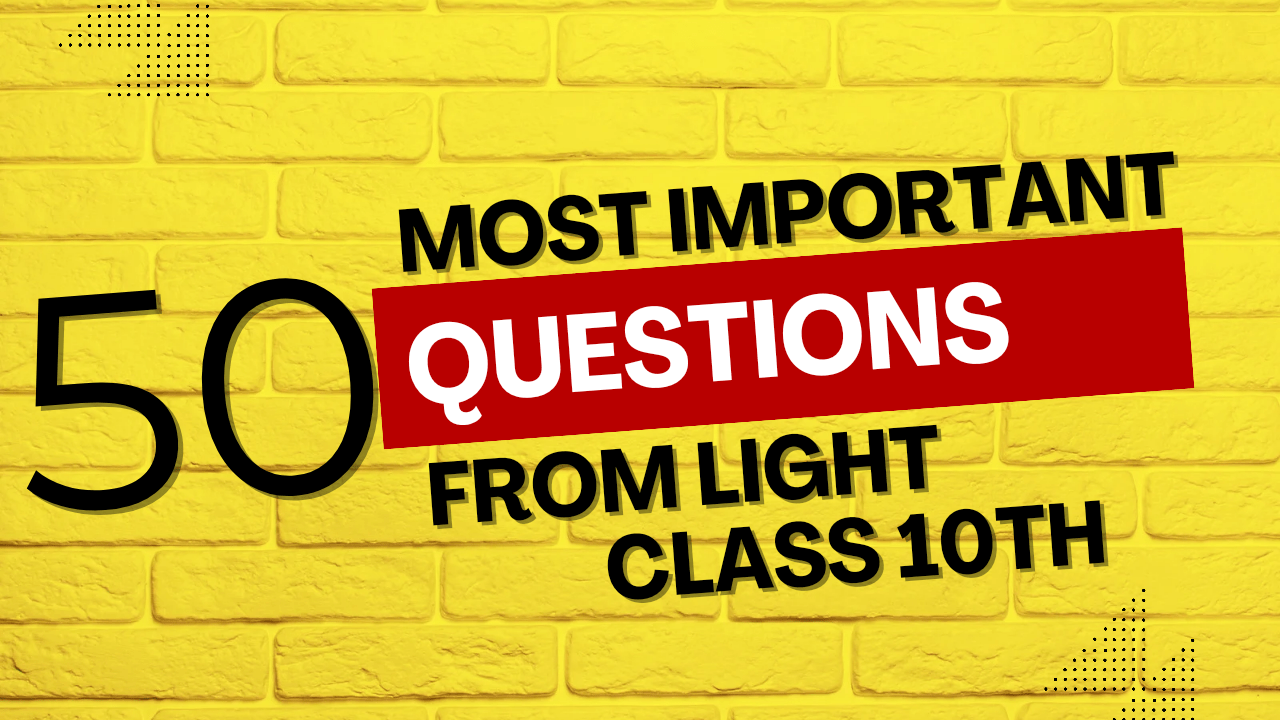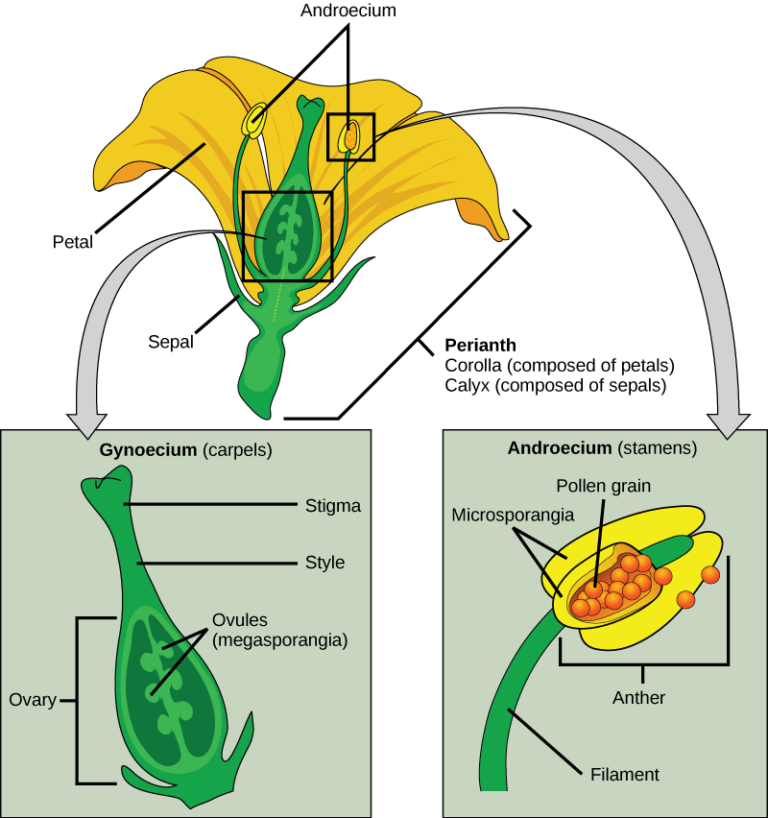Class 10th Science chemical equation & reactions Top 50 short answers type questions with examples are as under :
- What is a chemical equation?
A chemical equation is a symbolic representation of a chemical reaction, showing the reactants and products with their respective quantities. - What is a balanced chemical equation?
A balanced chemical equation has an equal number of atoms of each element on both sides of the equation. - Why is balancing chemical equations important?
Balancing chemical equations ensures the conservation of mass, as matter cannot be created or destroyed. - What does the symbol (s) represent in a chemical equation?
The symbol (s) represents a solid state of a substance. - What does the symbol (aq) represent in a chemical equation?
The symbol (aq) represents an aqueous solution, indicating the substance is dissolved in water. - What does the symbol (g) represent in a chemical equation?
The symbol (g) represents a gaseous state of a substance. - What does the symbol (l) represent in a chemical equation?
The symbol (l) represents a liquid state of a substance. - What is a reactant?
A reactant is a substance that undergoes change during a chemical reaction. - What is a product?
A product is a substance that is formed as a result of a chemical reaction. - Give an example of a simple chemical equation.
H₂ + O₂ → H₂O. - What is a combination reaction?
A combination reaction is a chemical reaction where two or more substances combine to form a single product, e.g., 2H₂ + O₂ → 2H₂O. - What is a decomposition reaction?
A decomposition reaction is a chemical reaction where a single compound breaks down into two or more simpler substances, e.g., 2H₂O₂ → 2H₂O + O₂. - What is a displacement reaction?
A displacement reaction is a chemical reaction where an element displaces another element from a compound, e.g., Zn + CuSO₄ → ZnSO₄ + Cu. - What is a double displacement reaction?
A double displacement reaction is a chemical reaction where two compounds exchange ions to form two new compounds, e.g., AgNO₃ + NaCl → AgCl + NaNO₃. - What is a redox reaction?
A redox reaction is a chemical reaction involving the transfer of electrons between two substances, leading to oxidation and reduction. - What is oxidation?
Oxidation is the loss of electrons or increase in oxidation state by a molecule, atom, or ion. - What is reduction?
Reduction is the gain of electrons or decrease in oxidation state by a molecule, atom, or ion. - Give an example of a redox reaction.
Zn + Cu²⁺ → Zn²⁺ + Cu. - What is the law of conservation of mass?
The law of conservation of mass states that mass is neither created nor destroyed in a chemical reaction. - What is a catalyst?
A catalyst is a substance that increases the rate of a chemical reaction without being consumed in the process. - Give an example of a catalytic reaction.
2H₂O₂ (aq) → 2H₂O (l) + O₂ (g) with MnO₂ as a catalyst. - What is an exothermic reaction?
An exothermic reaction is a chemical reaction that releases energy in the form of heat, e.g., combustion of methane: CH₄ + 2O₂ → CO₂ + 2H₂O + energy. - What is an endothermic reaction?
An endothermic reaction is a chemical reaction that absorbs energy from the surroundings, e.g., photosynthesis: 6CO₂ + 6H₂O + energy → C₆H₁₂O₆ + 6O₂. - What is a precipitate?
A precipitate is an insoluble solid that forms and settles out of a liquid mixture during a chemical reaction. - Give an example of a precipitation reaction.
AgNO₃ (aq) + NaCl (aq) → AgCl (s) + NaNO₃ (aq). - What is a reversible reaction?
A reversible reaction is a chemical reaction where the reactants form products that can react to form the reactants again, e.g., N₂ + 3H₂ ⇌ 2NH₃. - What is an irreversible reaction?
An irreversible reaction is a chemical reaction where the products cannot revert back to the reactants, e.g., combustion of wood. - What is an aqueous solution?
An aqueous solution is a solution in which water is the solvent. - What is a chemical change?
A chemical change is a process where one or more substances are transformed into new substances with different properties. - What is a physical change?
A physical change is a process where a substance changes its physical form or properties without changing its chemical composition. - Give an example of a physical change.
Melting of ice to form water. - What is an indicator in chemistry?
An indicator is a substance that changes color to indicate the presence of an acid or base in a solution. - Give an example of a chemical reaction with an indicator.
Phenolphthalein in a base turns pink: NaOH (aq) + phenolphthalein → pink color. - What is a synthesis reaction?
A synthesis reaction is another term for a combination reaction where two or more substances combine to form a single product. - What is a single displacement reaction?
A single displacement reaction is the same as a displacement reaction, where one element replaces another in a compound. - Give an example of a single displacement reaction.
Fe + CuSO₄ → FeSO₄ + Cu. - What is a neutralization reaction?
A neutralization reaction is a chemical reaction between an acid and a base, producing a salt and water, e.g., HCl + NaOH → NaCl + H₂O. - What is a combustion reaction?
A combustion reaction is a chemical reaction where a substance combines with oxygen to release heat and light, e.g., C₃H₈ + 5O₂ → 3CO₂ + 4H₂O. - What is the pH scale?
The pH scale measures the acidity or basicity of a solution, ranging from 0 to 14, with 7 being neutral. - What is a spectator ion?
A spectator ion is an ion that does not participate in the chemical reaction and remains unchanged. - Give an example of a reaction that involves spectator ions.
Na⁺ and Cl⁻ in the reaction: NaOH (aq) + HCl (aq) → NaCl (aq) + H₂O (l). - What is the mole concept?
The mole concept is a way to quantify the amount of a substance, based on Avogadro’s number, which is 6.022 × 10²³ entities. - What is the significance of Avogadro’s number?
Avogadro’s number represents the number of atoms, molecules, or ions in one mole of a substance. - What is a limiting reactant?
A limiting reactant is the reactant that is completely consumed first, limiting the amount of products formed. - What is an excess reactant?
An excess reactant is a reactant that remains after the limiting reactant is completely consumed in a reaction. - What is a molecular equation?
A molecular equation shows the complete chemical formulas of reactants and products without indicating their ionic nature. - What is an ionic equation?
An ionic equation shows the ions involved in a reaction, highlighting those that participate directly in the chemical change. - What is a net ionic equation?
A net ionic equation shows only the ions and molecules directly involved in the reaction, excluding spectator ions. - Give an example of a net ionic equation.
Ag⁺ (aq) + Cl⁻ (aq) → AgCl (s). - What is an empirical formula?
An empirical formula represents the simplest whole-number ratio of atoms of each element in a compound.




